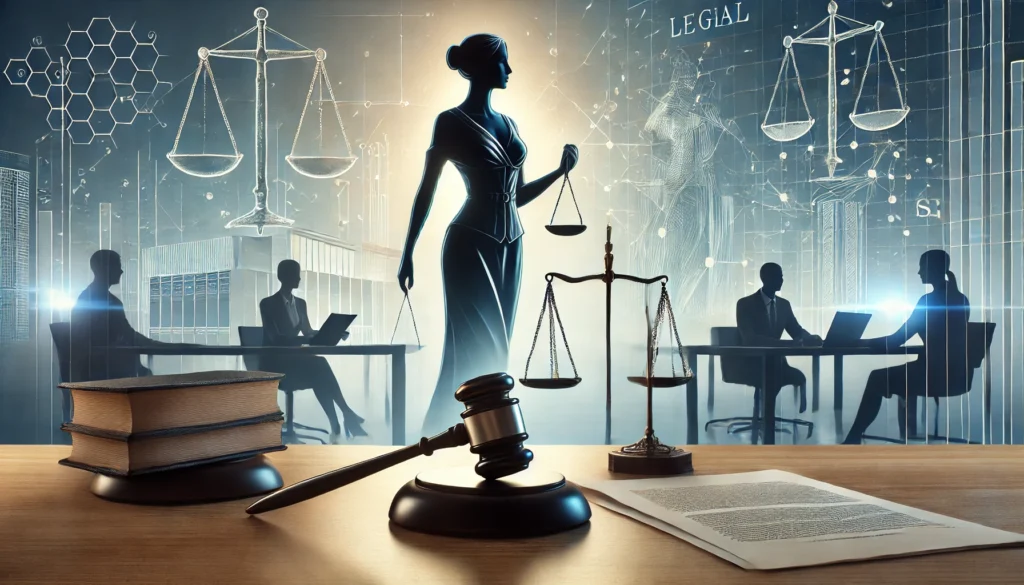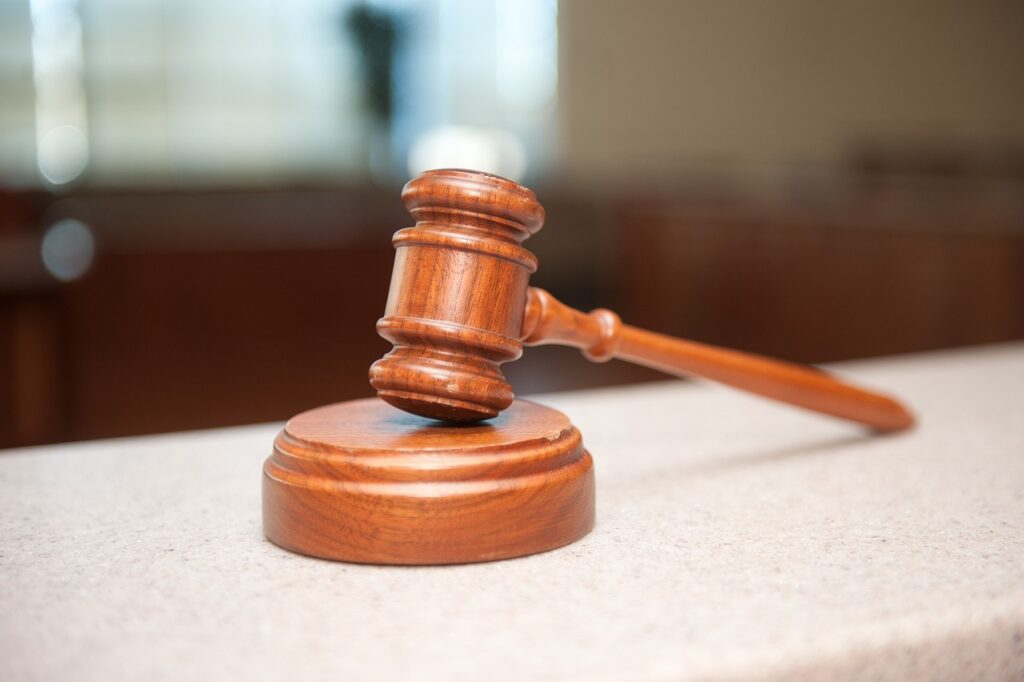Published On: 13th October, 2023
Supreme Court Advocates on Record v. Union of India, AIR 2015 SC 5457
BACKGROUND
The independence of the judiciary is the foundation of the case. Because it serves to uphold the rule of law for the protection of the democratic system and supports the guiding principles of separation of powers in the constitution, this case has come to be known as the Second Judges Case. As everyone is aware, the Supreme Court is the core of the Constitution, protecting all of its rights and edifice. Judges may only be appointed, transferred, or removed based on decisions of the Supreme Court. The Supreme Court protects the Constitution’s fundamental nature.
One of the most significant cases that reaffirmed the Constitution’s essential principles of the separation of powers and the independence of the judiciary was the Supreme Court Advocate on Record Association v. Union of India.
As is widely recognized, the collegium is the structure for the appointment and transfer of judges that has developed as a result of Supreme Court rulings. The Chief Justice of India presides over the collegium of the Supreme Court, which consists of four senior Justices. The name of the appointed judge only reaches the government after being approved by the Chief Justice of India and the Supreme Court collegium. Only the collegium method is used to nominate judges in the upper courts, and the government only takes on this responsibility once the collegium has selected the candidates.
If a lawyer is to be raised as a judge in any High Court or the Supreme Court, the government’s participation is limited to requesting that the Intelligence Bureau conduct an investigation. As a result of decisions made by the Constitution Bench, the government is required to appoint them as judges after their names have been finalized.
FACTS OF THE CASE:
The Supreme Court Advocates Record Association and Senior Advocates filed a writ petition before the Supreme Court in 2015 challenging the constitutionality of the 99th Amendment and the NJAC Act.24 This petition claimed that the NJAC was violating the basic doctrines of the constitution by undermining the independence of the judiciary.
It was decided that by giving the government priority in higher judiciary appointments, the CJI’s recommendation on judicial appointments could be rejected for cogent cause.
The majority decision restored the Chief Justice’s authority over transfers and judicial appointments, and it was declared that the Chief Justice only needs to consult two senior judges when making key decisions, as was the case in the 1993 Second Judge Case, which involved nine bench justices.
However, the Supreme Court mandated that four senior judges be consulted by CJIs before any judicial transfers or appointments are made.
To formulate judicial appointments, the NDA administration established the Venkatachaliah Commission in 2000. Its members included a chairperson, two senior judges, the union minister for law, and one person selected by the president after consulting the chief justice of India.
The NDA government’s 98th Amendment Bill of 2003, which aimed to create a national judicial panel, was based on this study.
According to a different bill put forth by the UPA government, the 120th Amendment plan of 2013, a commission will be made up of three members appointed to the judiciary and three members appointed to non-judicial positions, with each receiving an equal vote.
The NDA government also introduced the 121st amendment bill in 2014, which was approved by both houses of parliament. In April 2015, the NJAC Act went into effect.
Due to the NJAC case’s violation of the principles of the separation of powers and the independence of the judiciary, the National Judicial Appointment Commission Act and the Constitution Act 2014 were both declared unlawful by the court.
The NJAC decision, which included five views, was released on October 16th, 2015. The court was divided four to one, with four judges voting in favor and one justice disapproving.
ISSUES RAISED BEFORE THE COURT:
There were broadly two issues in this case:
- Whether the 99th Amendment Act 2014, was constitutionally valid?
- Whether NJAC Act 2014, are violative of the separation of powers or not?
CONTENTIONS:
BY THE APPELLANT:
According to Article 50 of the Constitution, the appellant claimed that the executive and judicial branches of government must be kept apart. The appellant stated that government influence in judicial appointment should be kept to a minimum and that the CJI’s proposal ought to be taken seriously.
The power of the President has turned the CJI into a passive body rather than an active participant, which has been counterproductive in the judiciary appointment process. Executive supremacy is stifling judicial independence, which will erode the administration of free and just justice. The judiciary’s independence has been jeopardised by the contested constitutional revision.
Articles 124 and 217 eliminate the chief justice of the NJAC’s responsibilities.
BY THE RESPONDENT:
The Union of India has asked the court to rule on the legality of two precedents that are directly related to the dispute. A candidate will only be appointed to a higher court if they receive the support of five out of the commission’s six members.
The contested sections, it was argued, maintain the constitution’s fundamental framework. The Constitution has already given the President more discretion in the selection process. The amount of pay and allowances cannot be reduced by any consensus measure passed by the legislature because they are specified by the Constitution.
RATIO DECIDENDI:
In 1993, a nine-judge Supreme Court Constitution Bench overturned the ruling in SP Gupta’s Case (S.P. Gupta v. Union of India), a case from the late 1980s in which the Supreme Court Constitution Bench held that “consultation” does not mean “concurrence” and further ruled that the concept of the Chief Justice of India’s primacy is not really to be found in the Constitution, by a 7-2 majority.
The color of the word “consultation” must be distinguished from the color it might take in the context of the Executive involved in that process to aid in the selection of the most suitable resources available when it is being discussed with the Chief Justice of India, who serves as the head of the Indian Judiciary, for purposes of the composition of higher Judiciary.
The constitutional functionaries’ procedure of consultation when choosing candidates for the Supreme Court and the High Courts is better described by the word “concurrence” The Chief Justice of India’s view must be followed in all appointments made by the Executive.
In terms of judicial appointments, the Executive is not answerable to the public. The President is bound by the Council of Ministers’ recommendations by the Constitution. Therefore, the council must adhere to the idea of the Chief Justice of India’s primacy. The Chief Justice of India and the Chief Justice of High Courts’ opinions reflect not just their personal views but also those of the whole judiciary.
The issue of transfer is not justiciable on any other grounds, including the reasons for the transfer or their sufficiency, save from the constitutional requirement that a transfer be made only on the Chief Justice of India’s recommendation.
JUDGEMENT:
This leads the court to reach the following conclusion regarding the issue of primacy: The Chief Justice of India’s role in the appointment of Supreme Court judges is singular, primary, and unique, but participatory vis-à-vis the executive on a level of togetherness and mutuality, and neither he nor the executive can force an appointment against the wishes of the other.
The majority of the court, made up of Justices JS Verma, Yogeshwar Dayal, GN Ray, Dr AS Anand, and SP Bharucha, together with concurring opinions from Justices S. Pandian and Kuldip Singh, J.J., held that the “primacy” issue in SP Gupta’s case is invalid. The minority, made up of Justices Ahmadi and Punchhi, believed that the executive should have primacy in the Chief Justice of India’s judgement, and while Justice Punchhi did not express an opinion on the issue of the fixation of judge strength, Justice Ahmadi’s opinion, concurred with Venkataramaiah judgement, judgement in SP Gupta’s case, allowing a limited mandamus to be applied to the matter.
The Chief Justice of India has precedence in situations involving the appointment of judges to the Supreme Court or High Court as well as the transfer of High Court Judges or Chief Justices. In cases involving the appointment and transfer of judges, there is a very limited amount of judicial review available. And, it is legal to fix the strength of the judges in the High Courts.
CONCLUSION
The judgment is flawed at the start. an oversized part of the bulk judgment is at risk of being rendered otiose. As Justice MM Punchhi has realized an outsized part of the bulk decision is obiter because it wasn’t supported by the reference. The court has answered questions it was not asked. Hence the remainder of the judgement is obiter.
Additionally, this decision essentially rewrites the Constitution. The word ‘consultation’ can never mean ‘concurrence’. This could be an effort to carry out the 121st Law Commission recommendation, which was never implemented. Therefore, it is not the responsibility of the legislature to carry out the duties of the Judiciary. The Chief Justice of India represents the Judiciary of India. India’s judiciary was designed to be free from all political pressure and objectives.
REFERENCES
- https://www.delhilawacademy.com/supreme-court-advocates-on-record-association-v-union-of-india-2015-sc/
- https://privacylibrary.ccgnlud.org/case/supreme-court-advocates-on-record-assn-vs-union-of-india
- https://www.ejusticeindia.com/supreme-court-advocates-on-record-association-vs-union-of-india/
- https://indiankanoon.org/doc/753224/




